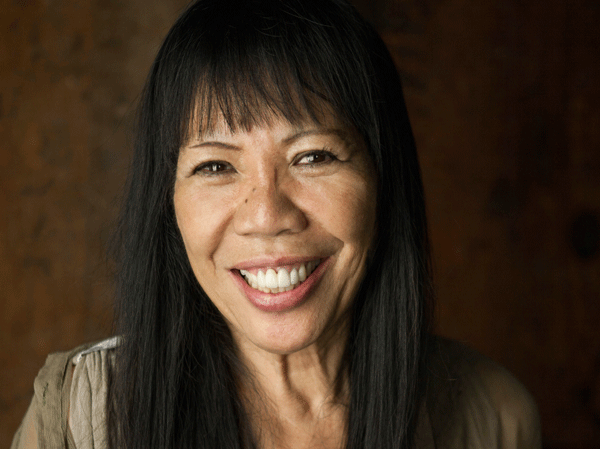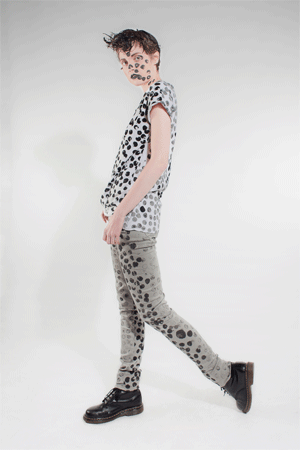The three Koshino sisters followed in the footsteps of their mother, Ayako, and have gone on to become legendary designers in their own right. Their innovative yet differing styles have earned them fans from around the world. Weekender’s Matthew Hernon met Michiko Koshino, pictured above, back ‘home’ in Tokyo last month.
Making clothes is in their blood and from a young age it was clear that both Hiroko and Junko were destined to make their mark in the fashion world. Michiko, however, was a little different. As the youngest sibling, she started off on a different path.
“Despite being surrounded by fabrics and other materials, I was not really into fashion as a youngster,” she tells Weekender. “I didn’t really have the time as I put all my energy into playing tennis; I was constantly practicing. But then I won the national championship and, from that day, I decided to give it all up. I had reached my goal and that was that. I threw all my rackets away and set out looking for a new challenge.
I told my mother I wanted to make clothes and she was absolutely delighted, as she had no interest in my tennis career really. She told me I should learn the traditional way so I went to college, but that lasted just three days! I just wasn’t interested in what they were teaching me there. I felt I could learn more from my mum, so I went home and closely observed what she did. It’s the best decision I’ve ever made.”
Working at her mother’s boutique proved an invaluable experience, not only in terms of design skills she gained, but also from a business perspective. She was now ready to go out on her own and made the brave decision to set up her first shop in 1981, in London.
“I wanted to be my own person and that meant doing something different from them. That is part of the reason why I moved to the UK. Hiroko and Junko were already famous in Japan and I felt there was no room for me there.” Located on high-end Neal Street in the vibrant Covent Garden area of central London, the bright lights and in-store DJs meant it appeared more like a nightclub than a clothes store. It was a complete contrast to the more refined and traditional establishments that her sisters had opened in Japan.
“Living in England helped give me an identity. I grew up constantly hearing people talking about my mother and sisters’ clothes and now they were suddenly talking about mine. It was an amazing feeling.”
Michiko’s name soon spread. Fusing hi-tech and classic fabrics, she created clothes that were ultra-hip and edgy but with a traditional, oriental twist. She attracted a cult following by staying away from a mainstream look but her major breakthrough came after the launch of Motorking in 1987. Now seen as collector’s items, the biker-inspired clothes proved to be a massive hit amongst British clubbers as the rave scene gained traction in the late 80s.
“My goal was to make something that would help protect people from the cold and rain in England, so I worked with the motorcycle clothing manufacturer, Adachi to make Motorking. I was really impressed with their machines and the way they created their clothes. I stayed at their factory for a week and took what I learned from them and made something that the average person on the street could wear. I was surprised it became so popular for clubbers.”
It wasn’t long before other brands were “ripping the idea off.” Finding it difficult to compete, the Osaka-born designer stopped making Motorking clothes in 1994 and started expanding her other collections. Michiko London was turning in to more of a lifestyle brand with cosmetics, furniture, underwear and a condom range that she produced in partnership with Aids charities. She even designed an environmentally friendly scooter for Honda.
Michiko was becoming a global phenomenon. Her Yen jeans collection, which used raw Japanese denim, was proving particularly successful in both the European and Asian markets. She was no longer simply seen as the eccentric Japanese designer who appealed to clubbers. Celebrity fans included the likes of Sting, David Bowie, the Spice Girls, David Beckham and one of Britain’s most famous songwriters. “I was watching an old Noel Gallagher interview recently and I was interested in what he was wearing, then I realized it was one of mine. I was so excited! I love seeing stars in my clothes.”
Music, not the weather, was one of the great appeals of England when she first moved there. More than thirty years later, she remains enthusiastic about the place. “I love the country, the music, the people, the way they dress. Brits really know what style suits them and wear their clothes accordingly. Japanese people, on the other hand, tend just to follow trends.”
Whilst she now considers London to be her true home, she still likes to keep up to date with what’s happening in the country of her birth and often, she says, watches Japanese TV on her iPad.

Actress Misako Yasuda, on playing Michiko’s character Satoko in Carnation:
“I felt a lot pressure playing such a legendary designer, but really enjoyed it. I think having two older, domineering sisters, she kind of created a role for herself as the stupid one, but when you see her work it is clear that she is a genius.
I love her British rock, military style. There is nothing flashy about her work, but it stands out because it is original. It was an honour to meet her; we had a rapport because our personalities are similar.”
One program she never missed was the NHK drama, Carnation. The morning serial, which ran for 151 episodes between October 2011 and March 2012, told the story of her mother, Ayako Koshino, who single-handedly raised three children while running a successful boutique (her husband died of illness on the front line during the second world war). The show was a hit, earning the highest ratings for a daytime drama since Dondo Hare in 2007.
What was it like seeing ‘herself’ on screen?
“I thought they did a great and really accurate job. I loved the beginning, learning about my mother’s childhood and my grandmother. I hadn’t heard those stories before. I must also say, Misako Yasuda (who played the character based on Michiko) was amazing. She had really similar mannerisms to me. I had to apologize when I met her though, for her having had to play such a stupid lady!”
Michiko may come across as an unconventional business lady, but stupid she is definitely not. Despite not being interested in fashion during her schooldays, she has gone on to become one of Japan’s most successful designers ever. She is not finished yet though.
“I am nowhere near thinking about retirement. I find making clothes easy so I am constantly looking for new challenges. My goal whenever I make anything is to make sure that it is the best.”
Young for 62, Michiko Koshino still has all the energy and enthusiasm of a teenager. It isn’t just new challenges she seeks; her reputation for spotting trends and acting on them almost before they happen seems safe. We can’t help but wonder what’s next.










